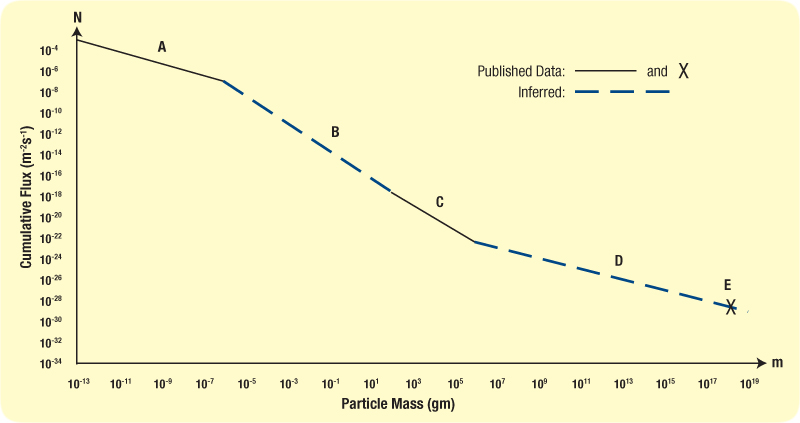Below is the online edition of In the Beginning: Compelling Evidence for Creation and the Flood,
by Dr. Walt Brown. Copyright © Center for Scientific Creation. All rights reserved.
Click here to order the hardbound 8th edition (2008) and other materials.
How Much Dust and Meteoritic Debris Should the Moon Have If It Is 4,600,000,000 Years Old?
In 1981, I had a conversation with Dr. Herbert A. Zook of the U.S. National Aeronautics and Space Administration (NASA). He had been intimately involved in estimating the thickness of the dust layer on the Moon before the first Apollo Moon landing. He also helped analyze the lunar material brought back from the Moon. Of the many interesting things he told me and gave me, one is critical in answering the above question.
NASA did not realize until the Moon dust and rocks were analyzed that only one part in 67 (or 1.5%) of the debris on the Moon came from outer space. The rest was pulverized Moon rock. In hindsight, this makes perfect sense. Meteorites striking the Moon travel about 10 times faster than a bullet—averaging 20 km/sec. They are not slowed down by an atmosphere (as on Earth), because the Moon has no atmosphere. Suddenly decelerating a meteorite traveling 20 km/sec to a “dead stop” would compress every atom in it and raise each particle’s temperature to many hundreds of thousands of degrees Celsius. Therefore, each projectile, regardless of size, instantly fragments and vaporizes upon impact, kicking up a cloud of pulverized Moon rocks. Vaporized portions of the meteorite then condense on the pulverized Moon rocks. This was discovered by slicing Moon rocks and finding them coated by meteoritic material—material rich in nickel. Pure Moon rocks have little nickel. In this way, NASA arrived at the factor of 67.1
